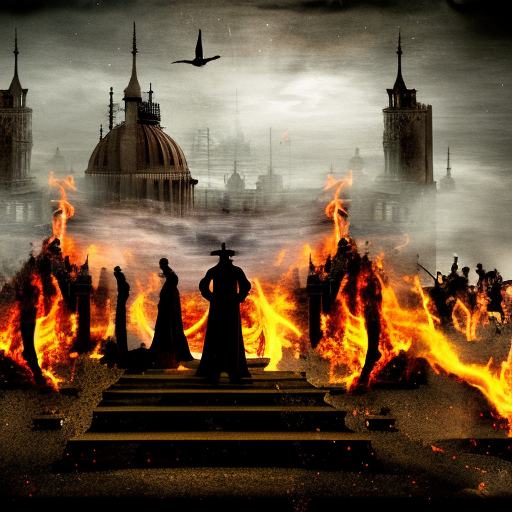One-line Summary:
In “A Column of Fire,” Ken Follett takes readers on a thrilling journey through the religious and political conflicts of 16th-century Europe, following the lives of a diverse cast of characters.
The Struggles of Religious Tolerance
“A Column of Fire” is set during the tumultuous period of the Reformation, where religious tensions run high and the Catholic Church fights to maintain its power. The novel explores the struggles of religious tolerance and the consequences of fanaticism. Ned Willard, a young Englishman, finds himself caught between his love for Margery Fitzgerald, a staunch Catholic, and his loyalty to the Protestant cause. As Ned navigates the treacherous waters of religious conflict, he witnesses the brutal persecution of those who dare to challenge the established order. Follett skillfully weaves together the stories of characters from different backgrounds, highlighting the complexities of religious beliefs and the lengths people will go to defend their faith.
A Web of Intrigue and Betrayal
Amidst the religious turmoil, “A Column of Fire” is also a tale of political intrigue and betrayal. Queen Elizabeth I ascends to the throne, and her reign is plagued by threats from both within and outside England. Ned becomes a trusted advisor to the queen and finds himself entangled in a web of espionage, as he works to protect his country from the machinations of foreign powers. The novel delves into the world of spies, secret codes, and covert operations, keeping readers on the edge of their seats as they uncover the hidden agendas of various characters. Follett masterfully captures the political climate of the time, highlighting the fragility of power and the lengths individuals will go to secure their own interests.
Love and Loss in Troubled Times
At its core, “A Column of Fire” is a story of love and loss set against the backdrop of a turbulent era. Ned’s relationship with Margery is tested by their differing religious beliefs, and their love is further complicated by the political forces at play. As Ned and Margery navigate the dangerous waters of their romance, they face heartbreak, separation, and the constant threat of violence. Follett skillfully portrays the emotional struggles of his characters, capturing the pain and resilience that love can inspire even in the darkest of times.
Key Takeaways:
- Religious conflicts can have far-reaching consequences, leading to persecution and violence.
- Political intrigue and betrayal often go hand in hand, particularly in times of uncertainty and power struggles.
- Love can endure even in the face of adversity, but it requires sacrifice and resilience.
“You can’t make people love you, but you can make them fear you.” – Ken Follett
In “A Column of Fire,” Ken Follett skillfully combines historical accuracy with compelling storytelling to transport readers to a time of religious and political upheaval. Through the lives of his diverse cast of characters, Follett explores the struggles of religious tolerance, the web of intrigue and betrayal that accompanies political power, and the enduring power of love in troubled times. This epic tale serves as a reminder of the complexities of human nature and the enduring impact of historical events.












